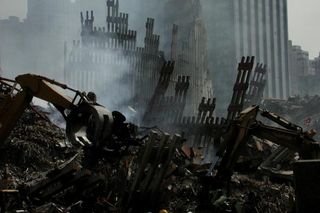
DNA Test Identifies 9/11 Victim 17 Years After He Died

When two planes struck and destroyed the twin towers on Sept. 11, 2001, 2,753 people died. But the heat and destructive forces in the burning, collapsing skyscrapers left many remains too damaged to identify. Until recently, just 1,641 (about three-fifths) of those victims had been positively identified among the human remains recovered from ground zero. But yesterday (July 25), a 1,642nd victim was matched with his remains thanks to advances in DNA technology and the efforts of the New York City medical examiner's office, The New York Times reported.
Scott Michael Johnson was 26 when the attack occurred, and worked on the 89th floor of the south tower as a securities analyst at the investment banking firm Keefe, Bruyette, & Woods. Forensic scientists showed that DNA extracted from a bone found at ground zero matched a DNA sample taken from his toothbrush and samples taken from his parents. According to the Times, he is the first victim identified since August 2017. [What Science Says About the Effects of 9/11]
Since 9/11, the Times reported, the medical examiner has maintained an ongoing effort to identify "nearly 22,000" remains recovered from the site. This successful identification was about the sixth or seventh attempt to identify Johnson's bone.
The process of identifying the bone, according to the Times, involves taking a sample of the bone and grinding it up into a powder to free the DNA. Forensic analysts then expose the powder to enzymes that replicate and multiply any DNA present, thereby increasing the size of the sample for sequencing. This time, the Times reported, the analysts used a new technique of pulverizing the bone using "ultrasonic ball bearings" (ball bearings that smash around very, very quickly), which created a finer powder. That finer powder helped produce a postive result.
Tom Johnson, Scott Michael Johnson's father, said that "though ... he was grateful that the city had been sensitive and diligent in its work, the news was just another reminder of the pain he and his family have felt for 17 years," the Times reported.
Originally published on Live Science.
Sign up for the Live Science daily newsletter now
Get the world’s most fascinating discoveries delivered straight to your inbox.

